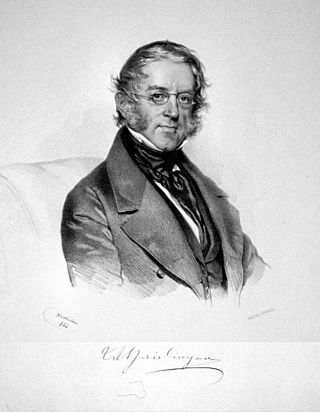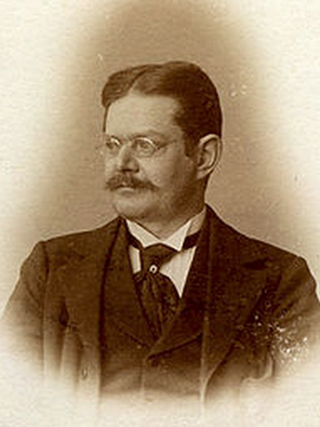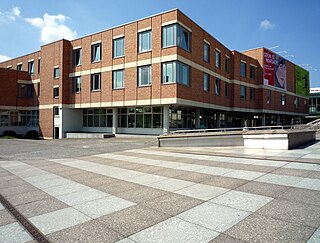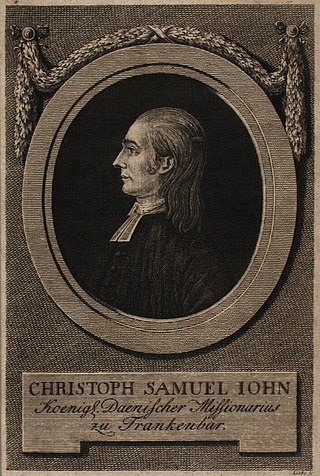Related Research Articles

Karl Hermann Johannes Thiele was a German zoologist specialized in malacology. Thiele was born in Goldap, East Prussia. His Handbuch der systematischen Weichtierkunde is a standard work. From 1904 until his retirement in 1925 he was the curator of the malacological collection at the Museum für Naturkunde in Berlin. Thiele described more than 1.500 new species of molluscs; until today their types are deposited with the Museum of Natural History in Berlin. Especially important are his works on the Mollusca of the First German Antarctica Expedition and of the German Deep Sea Expedition aboard the vessel Valdivia.

Wilhelm Karl Ritter von Haidinger was an Austrian mineralogist.

Johann Heinrich Friedrich Link was a German naturalist and botanist. The standard author abbreviation Link is used to indicate this person as the author when citing a botanical name.

Johann Christoph Friedrich Klug, was a German entomologist. He described the butterflies and some other insects of Upper Egypt and Arabia in Christian Gottfried Ehrenberg and Wilhelm Friedrich Hemprich's Symbolæ Physicæ. He was professor of medicine and entomology in the University of Berlin where he curated the insect collections from 1810 to 1856. At the same time he directed the Botanic Garden in Berlin which contains his collections. Klug worked mainly on Hymenoptera and Coleoptera. The plant genus Klugia was named in his honour as well as the butterflies Geitoneura klugii and Heliophisma klugii.

Eduard von Martens also known as Carl or Karl Eduard von Martens, was a German zoologist.

The Deutsche Morgenländische Gesellschaft, abbreviated DMG, is a scholarly organization dedicated to Oriental studies, that is, to the study of the languages and cultures of the Near East and the Far East, the broader Orient, Asia, Oceania, and Africa.

Christoph Gottlieb von Murr was a polymathic German scholar, based in Nuremberg. He was a historian and magistrate. He edited and contributed to significant cultural and scientific journals. A notable naturalist von Murr was a Member of the Gesellschaft Naturforschender Freunde zu Berlin and the Bayerische Akademie der Wissenschaften. He was also an art historian ,the author of the first bibliography of books on painting, sculpture, and engraving. He published extensively on illuminated manuscripts, early printed books, the history of libraries, the history of the Jesuit missions, the history of the Jews in China, Arabic and Chinese literature. Familiar with most of the European languages, he was an active correspondent with many of the most distinguished scholars of the period. He had a vast library.

Weimar Classicism was a German literary and cultural movement, whose practitioners established a new humanism from the synthesis of ideas from Romanticism, Classicism, and the Age of Enlightenment. It was named after the city of Weimar, Germany, because the leading authors of Weimar Classicism lived there.
Johann Carl Megerle von Mühlfeld was a scientist and zoologist who lived from 1765 to 1842.

The Göttingen Academy of Sciences is the oldest continuously existing institution among the eight scientific academies in Germany, which are united under the umbrella of the Union of German Academies of Sciences and Humanities. It has the task of promoting research under its own auspices and in collaboration with academics in and outside Germany. It has its seat in the university town of Göttingen. Its meeting room is located in the auditorium of the University of Göttingen.

Friedrich Heinrich Wilhelm Martini was a German physician, translator and conchologist.
The Calamian treeshrew is a treeshrew species found in the islands of Busuanga and Culion, which are part of the Calamian Islands group in the Philippines.

Gustav Tornier was a German zoologist and herpetologist.

The Kupferstichkabinett, or Museum of Prints and Drawings, is a prints museum in Berlin, Germany. It is part of the Berlin State Museums, and is located in the Kulturforum on Potsdamer Platz. It is the largest museum of graphic art in Germany, with more than 500,000 prints and around 110,000 individual works on paper.
Johan Peter Rottler was a Dutch missionary and botanist, most associated with the Danish Mission in Tranquebar and later Vepery, Chennai in southern India.
Karl Grünberg was a German entomologist specialising in Lepidoptera.

Gottlieb Tobias Wilhelm was a Protestant pastor and natural history writer, probably best known for his monumental "Unterhaltungen aus der Naturgeschichte" published originally in 19 volumes with posthumous additions extending it to 25 volumes. Three volumes dealt with human physiology and anatomy. He held that humans had descended from one pair following Biblical creation and argued that this made all humans equal. He wrote against slavery and the ill-treatment of people from other lands and cultures.

Catharina Helena Dörrien was a German botanist and teacher, recognized as "the most celebrated German-speaking female naturalist of the period". She was a talented artist who painted over 1,400 watercolor botanical illustrations, and published a catalogue of plants of the Principality of Orange-Nassau in 1777. She was also the first woman to name a fungal taxon.
Otto Wilhelm Hermann Reinhardt was a German botanist and conchologist. He was a teacher at a trade school in Berlin. Reinhardt was a friend of Paul Friedrich August Ascherson and co-founder of the botanical society in Brandenburg province.

Christoph Samuel John was a German missionary in the service of the Danish-Halle Mission in southern India at the Danish settlement of Tranquebar (Tharangambadi). He promoted schools, natural theology, and collected specimens of local natural history which he sent to collaborators and several species have been named from his collections including the plant Impatiens johnii, the snake Eryx johnii and the fish genus Johnius and the species Lutjanus johnii.
References
- 1 2 Nickelsen, Kärin (2006). ""In deutlichen Beschreibungen und richtigen Zeichnungen gemeinnütziger" – Abbildungen in der Gesellschaft Naturforschender Freunde zu Berlin (GNF), 1773-1800". Annals of the History and Philosophy of Biology. 11: 155–176.
- ↑ te Heesen, Anke (March 2004). "From natural historical investment to state service: collectors and collections of the Berlin Society of Friends of Nature Research, c . 1800". History of Science. 42 (1): 113–131. doi:10.1177/007327530404200104.
- ↑ Götz, Peter. "Historie: Geschichtlicher Abriss". GNF. GNF, Berlin. Retrieved 3 July 2023.